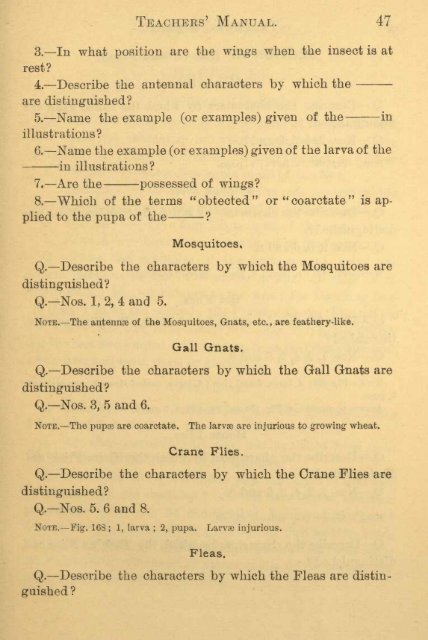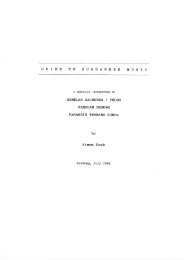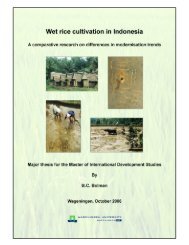Download - Free EBooks Library
Download - Free EBooks Library
Download - Free EBooks Library
You also want an ePaper? Increase the reach of your titles
YUMPU automatically turns print PDFs into web optimized ePapers that Google loves.
TEACHERS' MANUAL. 47<br />
3.—In what position are the wings when the insect is at<br />
rest?<br />
4.—Describe the antennal characters by which the<br />
are distinguished?<br />
5.—Name the example (or examples) given of the in<br />
illustrations?<br />
6.—Name the example (or examples) given of the larva of the<br />
in illustrations?<br />
7.—Are the possessed of wings?<br />
8.—Which of the terms "obtected" or " coarctate " is applied<br />
to the pupa of the ?<br />
Mosquitoes,<br />
Q.—Describe the characters by which the Mosquitoes are<br />
distinguished?<br />
Q.—Nos. 1, 2, 4 and 5.<br />
NOTE.—The antennae of the Mosquitoes, Gnats, etc., are feathery-like.<br />
Gall Gnats.<br />
Q.—Describe the characters by which the Gall Gnats are<br />
distinguished?<br />
Q.—Nos. 3, 5 and 6.<br />
NOTE.—The pupae are coarctate. The larvae are injurious to growing wheat.<br />
Crane Flies.<br />
Q.—Describe the characters by which the Crane Flies are<br />
distinguished?<br />
Q.—Nos. 5. 6 and 8.<br />
NOTE.—Fig. 16S ; 1, larva ; 2, pupa. Larvae injurious.<br />
Fleas.<br />
Q.—Describe the characters by which the Fleas are distinguished?








